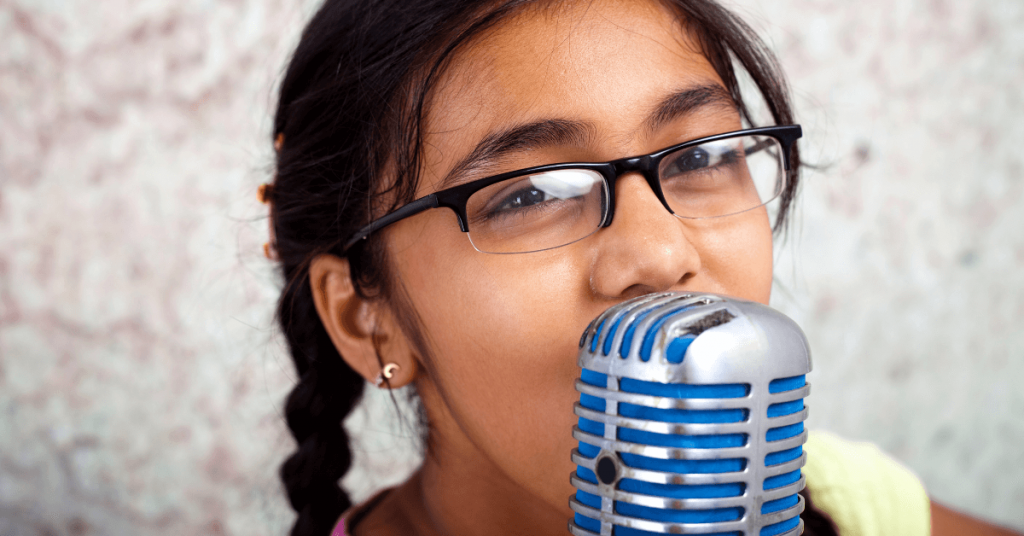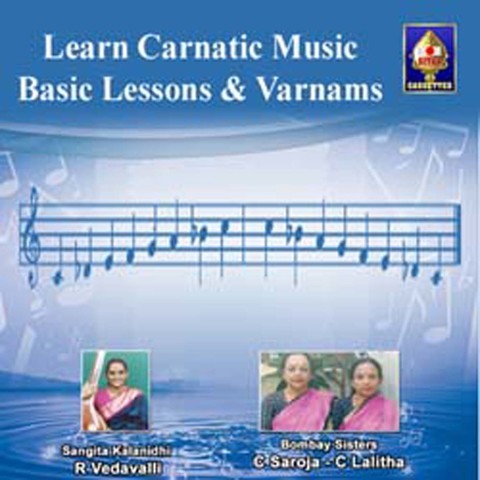
 Alankaram in the raga Mohanam, Shankarabharanam and Kharaharapriya. Teaching the students to sing aakarams of the varisais. Should be able to sing the basic varisais mentioned in Level 1.
Alankaram in the raga Mohanam, Shankarabharanam and Kharaharapriya. Teaching the students to sing aakarams of the varisais. Should be able to sing the basic varisais mentioned in Level 1. 
Learns to sing the 12 Swara sthanas with their gamakas or shakes. Enhanses voice culture through akaram practices. Makes the students sing jumbled swara patterns, in different combinations. But it may be either quick or late depending the involvement and practice of the individual student.

As we are much concerned about the perfection, the time mentioned above is just a plan of completing the course. But some students may take more time to understand the srutis and talas and for such students the course may take some more time than the stipulated time. Some may grasp extraordinarily well so that they may complete the course even before the stipulated time. But in order to provide quality and perfect music education to the students, the course duration may vary from student to student. The time duration of this course is 6 months for a normal student. A person must possess a inborn intelligence to grasp it quickly or should put great efforts to master the art. Music, being the finest of the fine arts, is not so easy to learn without making good effort. Creates interest among the students to perceive the next level of learning Carnatic music.
 Gets an exposure of one or more languages. Acquires knowledge of the basic concepts of raga and tala. Basic Sense of timing or rhythm and knowledge of singing varisais in 3 speeds. Gaining knowledge of the upper and lower octaves or registers. Ability to handle twin notes or to sing aahata or pratyahata gamakas. Getting Familiar with the notes of Mayamalava Gaula Raga. A song of the famous writer in the past such as Bharatiyar or Bharathidasan in Tamil. A patriotic song in any one of the south Indian Languages and a patriotic song in Hindi or Sanskrit. A devotional song on Lord Ganesha, Lord Muruga/ Any form of Lord Vishnu / Shiva,] and ambal. The concept of tala and 7 principal talas. Names of 7 Swaras and 12 Swara Sthanas and basic technical terms: Sruti, Raga, Tala, Aksharakala, anga,Mathra,Sthayi, Karvai. If a student has discontinued upto any of this basic learning due to any reason. No prior knowledge of Carnatic music is required. Apart from this, short songs of devotional and patriotic nature are taught to the students. This course starts from fixing the pitch of a student and makes the student to understand the swara sthanas of the raga Maya malava gaulai. We offer certificate courses at 3 different levels for the basic understanding of Carnatic music. The thurst of such passionate learners is satisfied by go4guru assuring quality music education at reasonable cost. In todays fast moving world, even though people are interested in learning music, they may not have enough time to approach a tutor or guru who may be at a long distance or sometimes in other countries. South Indian music is unique by itself possessing intricacies in the system of srutis, raga, tala, bhava and so on. Indian music is believed to have its origin from the Vedas and existed as a single system of music till the 12th century after which is bifurcated into the systems of South Indian music or the Karnatic music and the North Indian music or the Hindustani music. India, being a country of diverse customs and traditions, is much spiritual in nature and utilised all the art forms to express spirituality. Music is an universal language to express emotions. Foundation Course An introduction to Carnatic music courses.
Gets an exposure of one or more languages. Acquires knowledge of the basic concepts of raga and tala. Basic Sense of timing or rhythm and knowledge of singing varisais in 3 speeds. Gaining knowledge of the upper and lower octaves or registers. Ability to handle twin notes or to sing aahata or pratyahata gamakas. Getting Familiar with the notes of Mayamalava Gaula Raga. A song of the famous writer in the past such as Bharatiyar or Bharathidasan in Tamil. A patriotic song in any one of the south Indian Languages and a patriotic song in Hindi or Sanskrit. A devotional song on Lord Ganesha, Lord Muruga/ Any form of Lord Vishnu / Shiva,] and ambal. The concept of tala and 7 principal talas. Names of 7 Swaras and 12 Swara Sthanas and basic technical terms: Sruti, Raga, Tala, Aksharakala, anga,Mathra,Sthayi, Karvai. If a student has discontinued upto any of this basic learning due to any reason. No prior knowledge of Carnatic music is required. Apart from this, short songs of devotional and patriotic nature are taught to the students. This course starts from fixing the pitch of a student and makes the student to understand the swara sthanas of the raga Maya malava gaulai. We offer certificate courses at 3 different levels for the basic understanding of Carnatic music. The thurst of such passionate learners is satisfied by go4guru assuring quality music education at reasonable cost. In todays fast moving world, even though people are interested in learning music, they may not have enough time to approach a tutor or guru who may be at a long distance or sometimes in other countries. South Indian music is unique by itself possessing intricacies in the system of srutis, raga, tala, bhava and so on. Indian music is believed to have its origin from the Vedas and existed as a single system of music till the 12th century after which is bifurcated into the systems of South Indian music or the Karnatic music and the North Indian music or the Hindustani music. India, being a country of diverse customs and traditions, is much spiritual in nature and utilised all the art forms to express spirituality. Music is an universal language to express emotions. Foundation Course An introduction to Carnatic music courses.








 0 kommentar(er)
0 kommentar(er)
